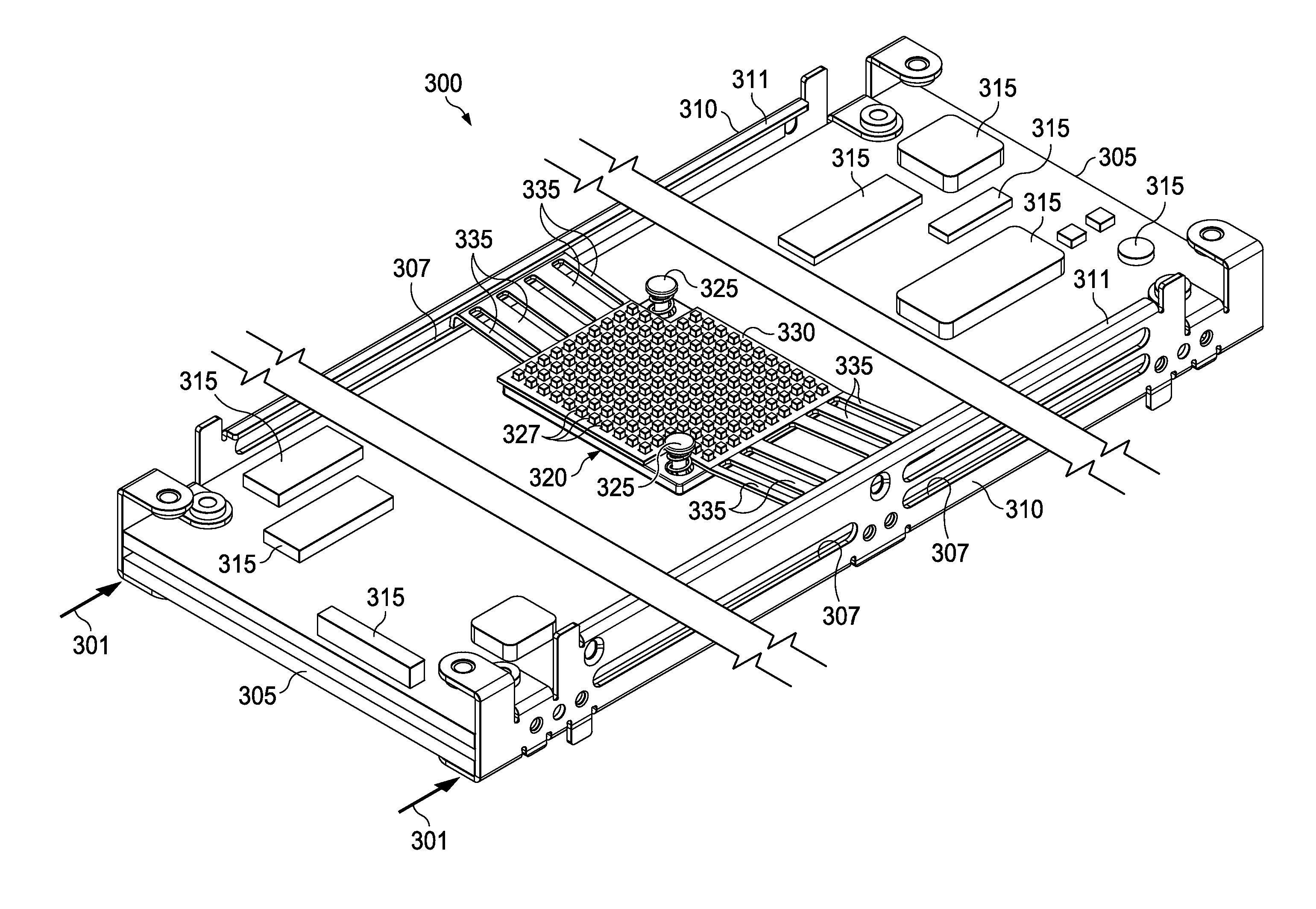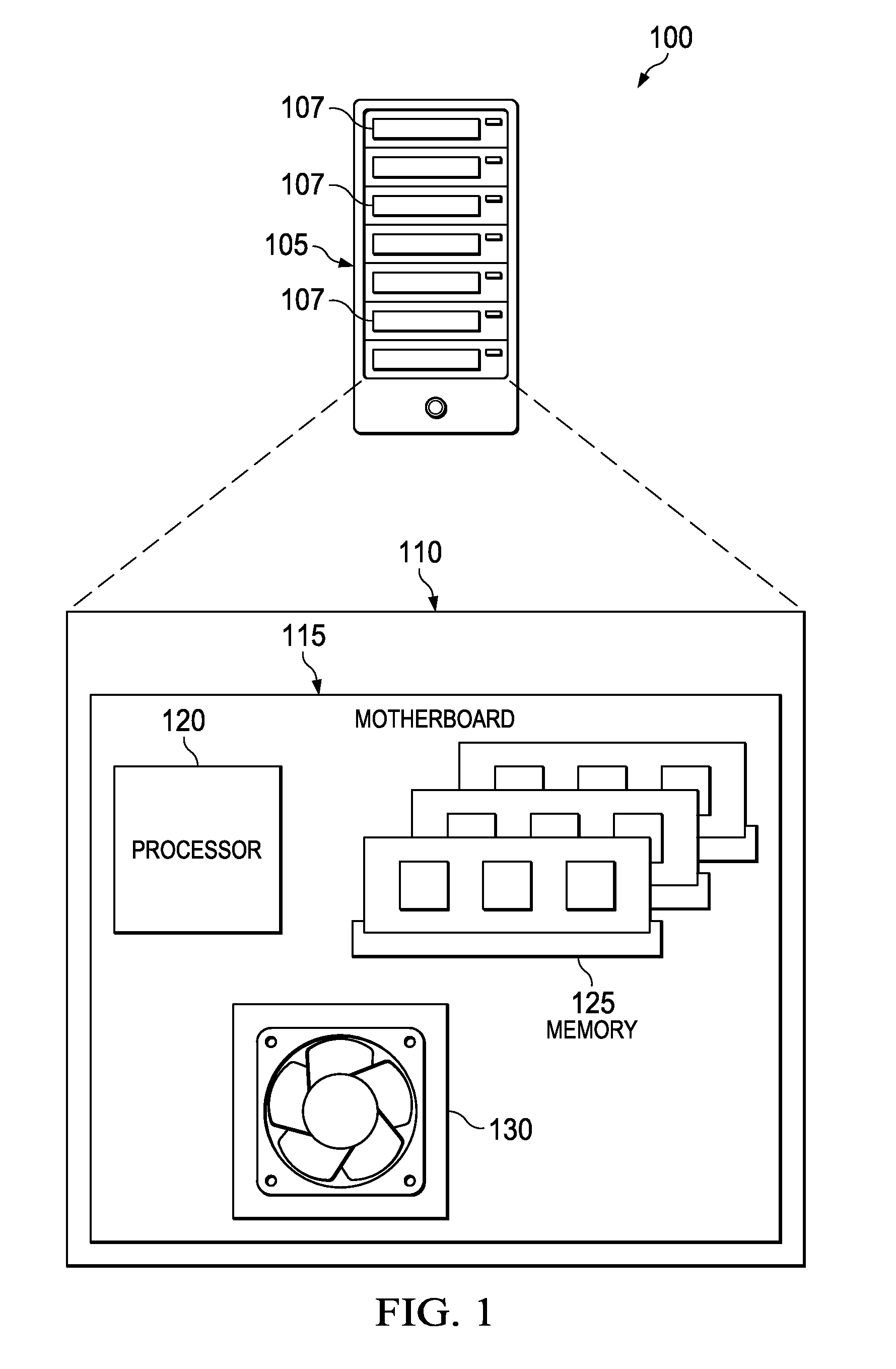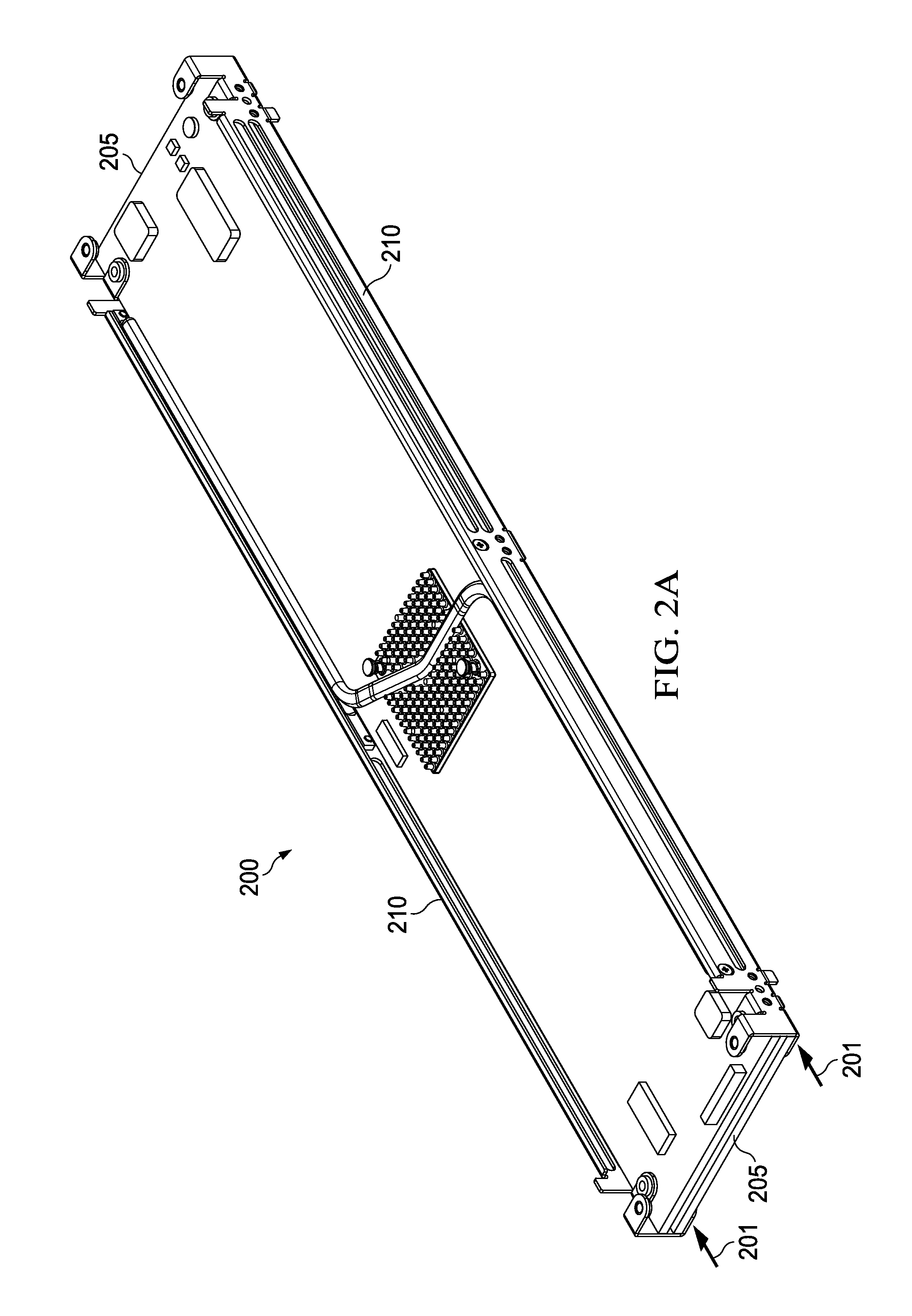Cooling heat-generating electronics
a technology for electronic devices and cooling systems, applied in the direction of electrical apparatus contruction details, electrical apparatus casings/cabinets/drawers, instruments, etc., can solve the problems of high power consumption, failure of one or more electronic devices on the tray, power consumption and electronics operation may also generate heat,
- Summary
- Abstract
- Description
- Claims
- Application Information
AI Technical Summary
Benefits of technology
Problems solved by technology
Method used
Image
Examples
Embodiment Construction
[0040]This document discusses cooling devices that may be implemented as heat sinks for computing equipment, and that may be used to remove heat from the vicinity of the components that are generating the heat, so as to prevent overheating and subsequent failure of the equipment. In some implementations, a thermal transfer system may be mounted on, or integrated with, a server rack assembly for a server rack. In addition, the thermal transfer system may be mounted on circuit card assemblies, daughter cards, and / or other electronic circuit supporting devices. A server rack sub-assembly may contain or support a number of heat-generating electronic devices used to facilitate data communication, storage, processing, or otherwise. Some devices of this type may be located on a motherboard (e.g. printed circuit board (PCB)) in a first area in that does not receive circulation of cooling airflow. Other such devices can be located on the motherboard in a second area that receives minimal coo...
PUM
 Login to View More
Login to View More Abstract
Description
Claims
Application Information
 Login to View More
Login to View More - R&D
- Intellectual Property
- Life Sciences
- Materials
- Tech Scout
- Unparalleled Data Quality
- Higher Quality Content
- 60% Fewer Hallucinations
Browse by: Latest US Patents, China's latest patents, Technical Efficacy Thesaurus, Application Domain, Technology Topic, Popular Technical Reports.
© 2025 PatSnap. All rights reserved.Legal|Privacy policy|Modern Slavery Act Transparency Statement|Sitemap|About US| Contact US: help@patsnap.com



